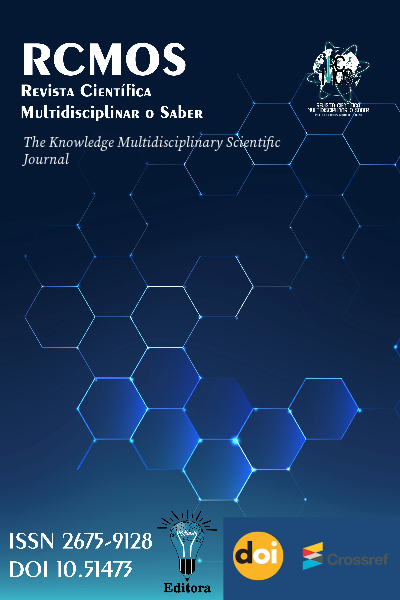Strength Training and Inclusion: Personal Trainer Strategies for the Health of Older Adultsand People with Special Needs
Strength Training and Inclusion: Personal Trainer Strategies for the Health of Older Adultsand People with Special Needs
DOI:
https://doi.org/10.51473/rcmos.v1i10.2021.1446Keywords:
Resistance training; Inclusion; Personal Trainer; Elderly; Special needsAbstract
Population aging and growing recognition of the rights of people with disabilities have highlighted the need for inclusive practices in physical education. In this context, force training emerges as a fundamental tool for the promotion of health, functional autonomy and quality of life of the elderly and individuals with special needs. This article aims to analyze, from a scientific and applied perspective, the contribution of the personal trainer in the elaboration of resisted programs adapted to different conditions, such as osteoporosis, sarcopenia, motor and intellectual deficiencies. To this end, the physiological effects of strength training on aging, the necessary adaptations in exercise protocols for special populations, the role of the professional as an agent and public health agent and the observed physical, cognitive and social benefits are discussed. Analysis articulates data from international and national research, pointing out ways for a professional evidence -based professional practice.
Downloads
References
AMERICAN COLLEGE OF SPORTS MEDICINE. ACSM’s Guidelines for Exercise Testing and Prescription. 10. ed. Philadelphia: Wolters Kluwer, 2020.
BEAN, J. F. et al. A comparison of leg power and leg strength within the InCHIANTI study: Which influences mobility more? Journals of Gerontology Series A: Biological Sciences and Medical Sciences, v. 65A, n. 12, p. 1313-1318, 2010.
CARMELI, E. et al. The effect of a resistance training program on muscle strength, joint mobility and functional performance in adults with Down syndrome. Journal of Strength and Conditioning Research, v. 16, n. 2, p. 174-180, 2002.
CASSILHAS, R. C. et al. Resistance exercise improves cognition in elderly individuals with memory impairment. Journal of the American Geriatrics Society, v. 55, n. 10, p. 1586-1591, 2007.
CARVALHO, J.; MARQUES, E. Exercício físico e autoeficácia: implicações para a adesão em idosos. Revista Portuguesa de Ciências do Desporto, v. 17, n. 2, p. 125-138, 2017.
CRUZ-JENTOFT, A. J. et al. Sarcopenia: revised European consensus on definition and diagnosis. Age and Ageing, v. 48, n. 1, p. 16-31, 2019. DOI: https://doi.org/10.1093/ageing/afz046
FLEG, J. L. et al. Accelerated longitudinal decline of aerobic capacity in healthy older adults. Circulation, v. 133, n. 6, p. 571-579, 2016.
FRAGALA, M. S. et al. Resistance training for older adults: Position statement from the National Strength and Conditioning Association. Journal of Strength and Conditioning Research, v. 33, n. 8, p. 2019-2052, 2019. DOI: https://doi.org/10.1519/JSC.0000000000003230
GRGIC, J. et al. Effects of resistance training performed to repetition failure or non-failure on muscular strength and hypertrophy: a systematic review and meta-analysis. Journal of Sport Sciences, v. 36, n. 23, p. 2638-2645, 2017.
HACKETT, D. A. et al. The role of technology in resistance training periodization. Sports Medicine, v. 49, n. 1, p. 1-14, 2019.
KRAEMER, W. J.; RATAMESS, N. A. Fundamentals of resistance training: Progression and exercise prescription. Medicine & Science in Sports & Exercise, v. 36, n. 4, p. 674-688, 2004. DOI: https://doi.org/10.1249/01.MSS.0000121945.36635.61
MENDES, R.; COSTA, F. C. B. Políticas públicas de atividade física e saúde no Brasil: uma análise do Programa Academia da Saúde. Revista Brasileira de Atividade Física & Saúde, v. 21, n. 2, p. 110-118, 2016. DOI: https://doi.org/10.12820/rbafs.v.21n2p110-122
NELSON, M. E. et al. Physical activity and public health in older adults: Recommendation from the American College of Sports Medicine and the American Heart Association. Medicine & Science in Sports & Exercise, v. 39, n. 8, p. 1435-1445, 2007. DOI: https://doi.org/10.1249/mss.0b013e3180616aa2
RATAMESS, N. A. ACSM’s Foundations of Strength Training and Conditioning. Philadelphia: Wolters Kluwer, 2012.
SCHOENFELD, B. J. Science and Development of Muscle Hypertrophy. Champaign: Human Kinetics, 2016. DOI: https://doi.org/10.5040/9781492595847
TWEEDY, S. M.; VANLANDEWIJCK, Y. C. International Paralympic Committee position stand—background and scientific principles of classification in Paralympic sport. British Journal of Sports Medicine, v. 45, n. 4, p. 259-269, 2011. DOI: https://doi.org/10.1136/bjsm.2009.065060
VINCENT, K. R. et al. Resistance exercise and physical performance in adults aged 60 to 83. Journal of the American Geriatrics Society, v. 50, n. 6, p. 1100-1107, 2002. DOI: https://doi.org/10.1046/j.1532-5415.2002.50267.x
WATTS, N. B. et al. Clinical utility of biochemical markers of bone remodeling in osteoporosis. Endocrine Reviews, v. 31, n. 2, p. 217-287, 2010.
WHO. WORLD HEALTH ORGANIZATION. Global Recommendations on Physical Activity for Health. Geneva: WHO, 2015.
Downloads
Additional Files
Published
Issue
Section
Categories
License
Copyright (c) 2021 Silvana Aquino de Andrade (Autor)

This work is licensed under a Creative Commons Attribution 4.0 International License.












